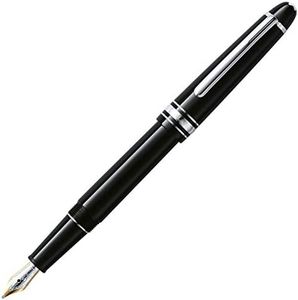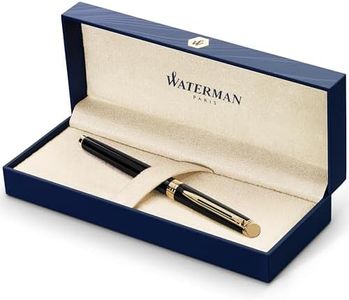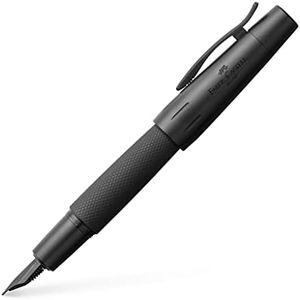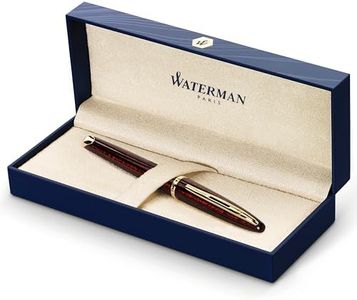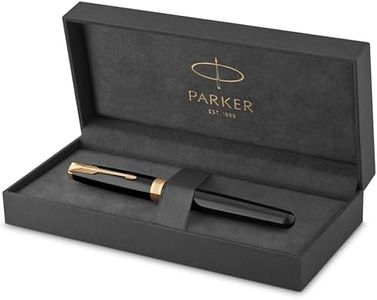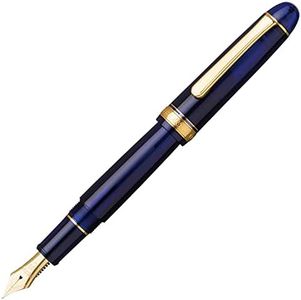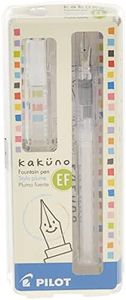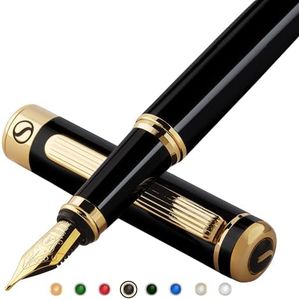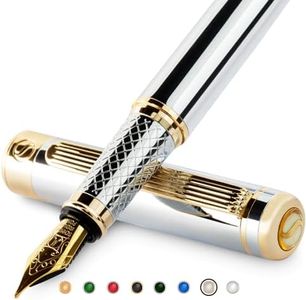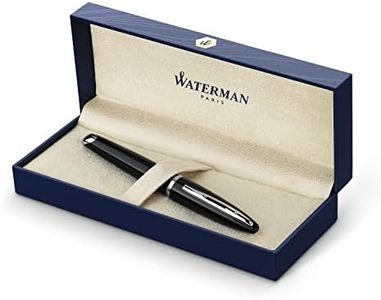We Use CookiesWe use cookies to enhance the security, performance,
functionality and for analytical and promotional activities. By continuing to browse this site you
are agreeing to our privacy policy
10 Best Fountain Pens
From leading brands and best sellers available on the web.Buying Guide for the Best Fountain Pens
Choosing the right fountain pen is about matching your writing style, comfort preferences, and intended use. A good fountain pen can make writing more enjoyable and personal, thanks to a smooth ink flow and customizable features. Before picking a pen, think about how you'll use it—whether it's for daily note-taking, journaling, art, or special occasions. Pay attention to how the pen feels in your hand, the writing experience you want (smooth, bold, fine, etc.), and how much maintenance you're willing to do.Nib SizeThe nib is the metal tip of the fountain pen that touches the paper. Nib size determines how thick or thin your written lines will be and can affect both appearance and comfort. Common nib sizes include extra fine, fine, medium, and broad. Extra fine and fine are great for small handwriting or detailed work. Medium is preferred for a balance between smoothness and practicality, while broad is chosen for bold, expressive writing. Selecting the right nib size depends on your handwriting style: if you write small and precise, go for finer nibs; if you like bolder, more expressive lines or have larger handwriting, consider medium or broad nibs.
Nib MaterialNib material refers to what the nib is made of, commonly stainless steel, gold, or other alloys. Stainless steel nibs are durable and affordable, making them great for everyday use. Gold nibs are often softer, offering a unique, cushioned feel and sometimes more flexibility, which can feel luxurious. If you’re just starting or need a reliable pen for frequent use, stainless steel works well; if you’re looking for a smoother or more customized writing experience, gold nibs may be worth considering.
Filling MechanismThe filling mechanism is the way ink is added to the pen. Common types include cartridge (pre-filled, replaceable units), converter (refillable, used with bottled ink), and piston (built-in refillable system). Cartridge pens are the easiest to use and least messy, making them great for beginners or those on-the-go. Converters and pistons allow you to use a wide variety of bottled inks and are more economical over time, but they require more effort and maintenance. Choose the method based on your convenience preference—if you like experimenting with inks and don’t mind a little work, go for refillable options; otherwise, cartridges are the simplest.
Body Material and WeightThe body material and weight of a fountain pen affect how it feels in your hand and how long you can comfortably write. Pens may be made from plastic, resin, metal, wood, or even more exotic materials. Lightweight pens are easier to handle for long writing sessions; heavier pens can feel more substantial and may offer better control for some people. Choose a material and weight that feels comfortable for the length and style of your writing sessions—lighter pens for long notes, heavier ones for occasional signatures or statement pieces.
Grip Comfort and Section ShapeThe grip or section is where you hold the pen, and its shape and texture strongly influence comfort during writing. Some pens have a smooth, straight section, while others are contoured or have added grip textures. If you write for extended periods, look for a shape and material that feels natural and doesn’t cause fatigue or slipping. Trying pens in person can help, but as a general rule, consider your grip style and try to find a pen that matches it.
Ink CompatibilityInk compatibility refers to what types of ink you can use with the pen—some take only proprietary cartridges, others accept standard international cartridges or bottled inks. If you like variety in colors or properties (like waterproof or fast-drying inks), make sure your pen supports using bottled ink or commonly available cartridges. If you just want a reliable, fuss-free pen, proprietary cartridges are fine, but for more options, look for ones that accept a wider range.
